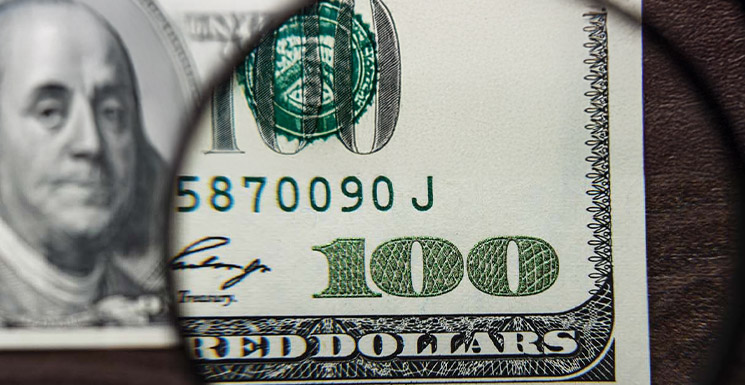How to Spot Counterfeit Money

In an era where technology makes counterfeiting easier, an estimated $70-$200 million in fake bills circulate anytime.
Astonishingly, about 60% of these are within the United States. What are the most commonly counterfeited denominations? The $20 and $100 bills.
All U.S. currency from the $5 bill and up have a visible watermark when the bill is held up to the light.
Except for the $5 bill, whose watermark is simply a 5, all of the watermarks should match the portrait on the bill. If there is no watermark, the bill may be a fake.
U.S. currency is uniquely printed on a blend of one-fourth linen and three-fourths cotton, unlike counterfeit bills, which often use standard paper.
Authentic bills also feature red and blue security fibers woven into the fabric, not merely sitting on the surface.
Additionally, all genuine U.S. bills exhibit some form of raised printing; a completely smooth bill is likely counterfeit. Check for areas expected to be raised to ensure the bill's authenticity.
3D Security Ribbon: Found on the $100 bill, containing moving bells within the weave
Security Threads: Visible in all bills $5 and up when held to the light, positioned to the right or left of the portrait. Colors and texts vary by denomination
The legal currency also has additional symbols that can assist with identification - the $5 depicts the Great Seal, $10 depicts the torch of the Statue of Liberty, $20 depicts an eagle, $50 depicts stars, and $100 depicts a quill.
Under light, ensure the bill has a security thread listing the correct denomination. Use ultraviolet light to verify the thread's color:
$5: Blue
$10: Orange
$20: Green
$50: Yellow
$100: Pink
If you find yourself in possession of a counterfeit bill, report it to local authorities immediately.
Avoid touching the bill excessively and cover it or seal it in a bag to preserve any fingerprints that may have been left behind. It’s also important to remember that the person who gave you the counterfeit bill may not realize they had a fake.
Provide information about the person who used the bill to law enforcement, but do not confront or accuse the individual.

Find out how to spot and prevent Social Security fraud.

Learn how to protect your business from email fraud.

Learn the communication tactics scammers use to trick you.